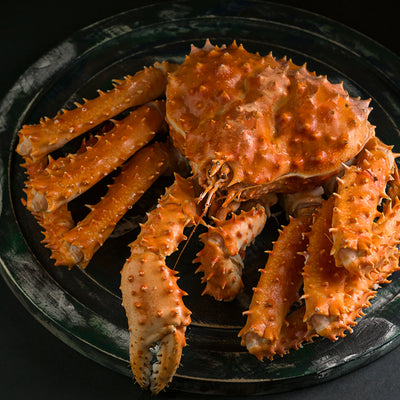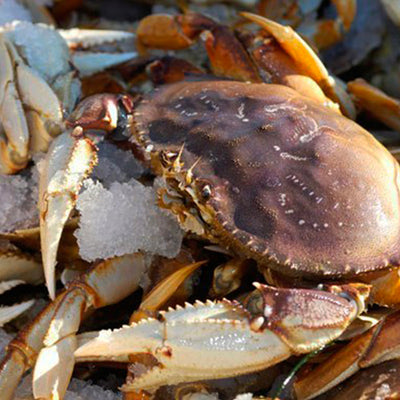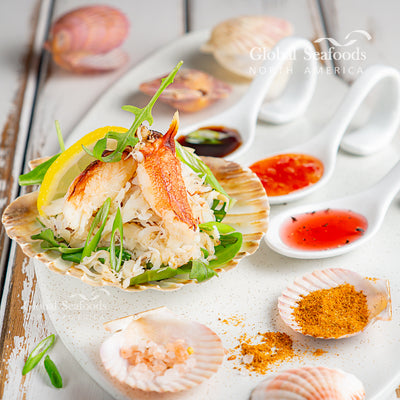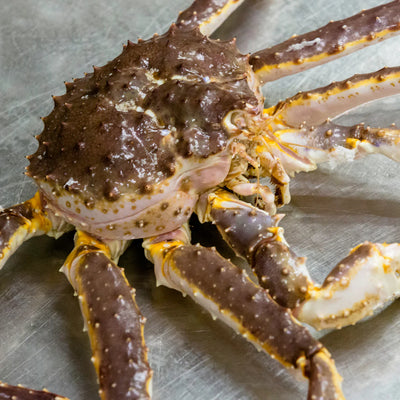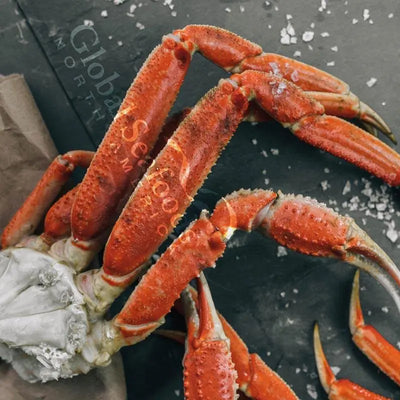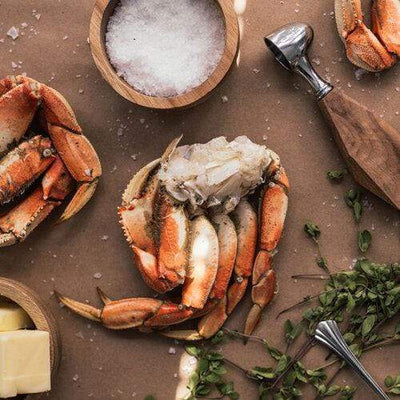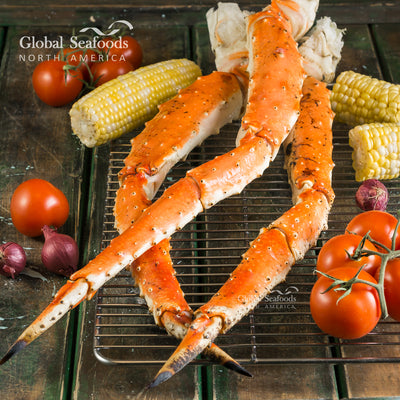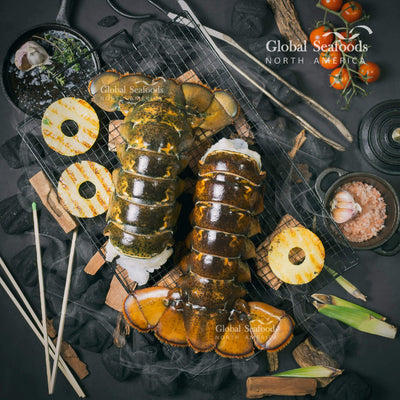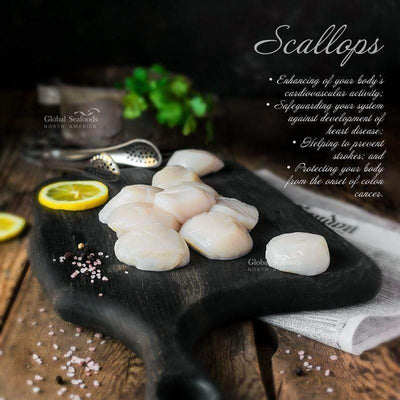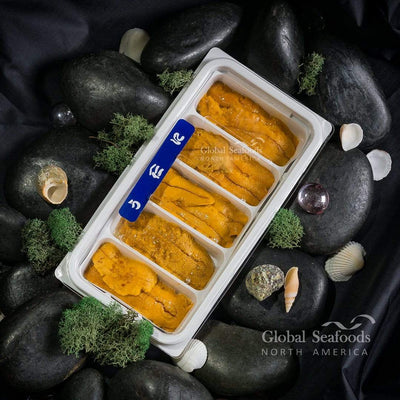The Complete Guide to Preparing and Cooking Live Crab: Expert Tips

Prepare and Cook Live Crab
There’s nothing quite like the taste of freshly prepared live crab. Whether you prefer the rich, buttery flavor of Golden King Crab, the sweet and delicate meat of Dungeness Crab, or the tender texture of Snow Crab, cooking live crab ensures that you’re enjoying the freshest seafood possible. However, for many people, the idea of preparing live crab at home can seem overwhelming.
This comprehensive guide will walk you through the entire process of preparing and cooking live crab—from selecting the best crab to humanely killing, cooking, and cleaning it. By the end, you’ll have the confidence to prepare restaurant-quality crab dishes right in your kitchen.
For sustainably sourced and high-quality crab, explore the selection at Global Seafoods, where you’ll find everything from King Crab to Dungeness Crab.
1. How to Choose the Best Live Crab
Before you can start preparing your crab, it’s essential to select the freshest, highest-quality crab available. Whether you’re purchasing Dungeness Crab, Snow Crab, or Golden King Crab, here’s what to look for when selecting live crab.
Tips for Choosing Live Crab:
- Movement: The crab should be active. A healthy, fresh crab will show movement, especially when touched.
- Weight: Heavier crabs are often packed with more meat. Choose crabs that feel dense for their size.
- Shell Condition: Look for crabs with a hard, intact shell. Avoid any that have visible damage or cracks.
- Smell: Fresh crab should smell clean and briny, like the ocean. Any strong fishy odors are a sign the crab may not be fresh.
When you want premium-quality crab, trust reputable sources like Global Seafoods, which offers a range of sustainably sourced crabs, including King Crab, Dungeness Crab, and Snow Crab.
2. Storing Live Crab Before Cooking
If you’re not cooking your crab immediately after purchase, it’s important to store it correctly to maintain its freshness. Live crab can survive for a short period out of water if stored in the right conditions.
How to Store Live Crab:
- Cool Environment: Place the crab in a cooler or ventilated container with a damp cloth. Keep them cool but not frozen.
- Refrigerate: Store live crabs in the refrigerator, ideally at 32-45°F. Use within 24 hours for the best quality.
- Moisture: Keep the crab moist but not submerged in fresh water, as this can suffocate them.
For long-term storage, cooked crab meat can be refrigerated or frozen. Global Seafoods offers high-quality, fresh crab meat, perfect for cooking at home.
3. Humanely Killing Live Crab for Cooking
One of the more challenging aspects of cooking live crab is knowing how to kill it humanely. There are several methods that ensure a quick and painless death for the crab, making the process more comfortable for home cooks.
Humane Methods for Killing Live Crab:
- Stunning in Ice Water: Place the crab in ice water for several minutes. The cold will numb the crab and reduce its movement, making the process more humane.
- Knife to the Head: Once the crab is immobilized in ice water, place the tip of a sharp knife between the crab’s eyes and swiftly push down. This will instantly kill the crab.
As Ruth Reichl, former editor of Gourmet Magazine, says, “Respect for the ingredients means understanding how to prepare them properly.” Learning to humanely kill live crab is essential for preparing fresh seafood responsibly.
4. Best Methods for Cooking Live Crab: Boiling and Steaming
Once the crab is ready, you can either boil or steam it. Both methods are simple and ensure tender, flavorful crab meat.
Boiling Live Crab
Boiling is the most common and straightforward method for cooking live crab.
- Boil Water: Fill a large pot with enough water to cover the crab. Add 1-2 tablespoons of salt per gallon of water, and bring to a rolling boil.
- Add the Crab: Lower the crab into the pot headfirst. If you’re boiling multiple crabs, make sure they have enough room to cook evenly.
- Cook Time: Cook the crab for 10-15 minutes, depending on the size. Smaller crabs, like Snow Crab, may only need 8-10 minutes, while larger crabs, like King Crab, need closer to 15 minutes.
- Cool in Ice Water: Transfer the crab to an ice bath to stop the cooking process and make it easier to handle.
Steaming Live Crab
Steaming retains more of the crab’s natural flavor and sweetness.
- Prepare the Steamer: Add 1-2 inches of water to a large pot, along with any aromatics like bay leaves or garlic. Bring the water to a boil.
- Add the Crab: Place the crab in a steaming basket above the water, cover, and steam for 12-20 minutes depending on size.
- Check for Doneness: The crab is done when the shell turns bright orange, and the meat is opaque and tender.
For premium King Crab and Snow Crab, visit Global Seafoods to explore their range of fresh seafood products.
5. How to Clean and Crack Cooked Crab
Once your crab is cooked, it’s time to clean and crack it to extract the meat. Proper cleaning ensures that you remove all inedible parts, while cracking allows you to access the tender meat inside.
Cleaning the Crab:
- Remove the Top Shell: Turn the crab on its back and use your thumbs to pry off the top shell.
- Discard Gills and Organs: Remove the feathery gills and internal organs. Rinse the crab under cold water to remove any debris.
- Split the Crab: Using a sharp knife, split the crab in half to expose the body meat.
Cracking the Crab:
- Twist Off Legs and Claws: Break off the legs and claws by twisting them at the joints.
- Crack the Shell: Use a crab cracker or mallet to gently crack the shells, being careful not to crush the meat.
- Extract the Meat: Use a seafood fork or pick to remove the meat from the legs, claws, and body.
For detailed video guides, check out the Global Seafoods YouTube Channel to see step-by-step instructions on how to crack and clean crab.
6. Enhancing Your Crab with Simple Flavors
Crab is delicious on its own, but a few simple additions can elevate its flavor even further. Here are some classic and creative ways to enjoy your cooked crab:
1. Garlic Butter Dipping Sauce
Melt unsalted butter with minced garlic and a squeeze of lemon juice for a luxurious dipping sauce that complements the natural sweetness of crab.
2. Old Bay Seasoning
Sprinkle Old Bay Seasoning over the cooked crab for a spicy, savory flavor that pairs beautifully with Dungeness Crab or King Crab.
3. Fresh Herbs and Lemon
Drizzle the crab with olive oil, fresh lemon juice, and a sprinkle of herbs like parsley or dill for a light, refreshing finish.
For more recipe inspiration, check out Global Seafoods and explore premium seafood options.
7. FAQs: Preparing and Cooking Live Crab
1. How long can I store live crab before cooking?
Live crab should be cooked within 24 hours of purchase. Store them in a cool, moist environment to keep them alive.
2. Is it better to steam or boil live crab?
Both methods work well, but steaming preserves more of the crab’s natural flavor, while boiling allows you to season the water for added flavor.
3. How do I know when the crab is fully cooked?
The shell will turn bright orange, and the meat inside will be opaque and firm when the crab is done.
4. Can I freeze live crab?
No, live crab should not be frozen. It’s best to cook the crab first, then freeze the cooked meat if needed.
5. What’s the best way to crack crab legs?
Use a crab cracker or small mallet to gently crack the shell. Avoid crushing the meat by using too much force.
For more seafood cooking tips and recipes, visit the Global Seafoods YouTube Channel and learn from expert chefs on how to prepare gourmet seafood dishes.
Also in News

How to Make Sea Bream Sushi With Dry-Aged Tuna & Crab Roll — Step-by-Step With Chef Joshua
A complete guide to making Sea Bream sushi at home, including filleting, curing, slicing, and building a Dry-Aged Tuna & Crab sushi roll. Chef Joshua shares professional tips for restaurant-quality results.

Boiled Crab for Game Night: Everything You Need for a Perfect Seafood Party
Take your game night to the next level with a Boiled crab party. Learn the best recipes, cooking tips, and hosting hacks for a memorable seafood feast.

Boiled Crab for Date Night: A Romantic Guide to the Perfect Seafood Feast
Make your next date night unforgettable with a romantic Boiled crab experience. This guide covers everything you need to know, from ambiance to the best crab varieties.

